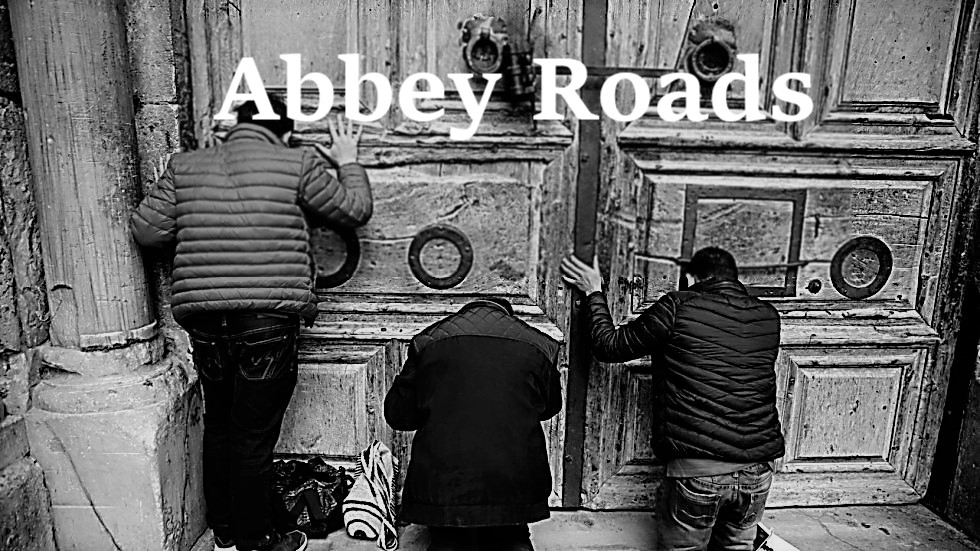Another reason why people left the Church.
Years ago a friend told me a story of a novice at the Benedictine Abbey of St. John's in Minnesota who knelt to pray before an ancient crucifix in the cloister. One of the monks came by and told him, "Get up - we don't do pious here." Meaning they were above traditional expressions of devotion, perhaps - or - simply testing the novice's humility?
When I was a novice in another monastery, the novice master was concerned that my devotion to the Sacred Heart of Jesus was too sensible, too superficial, too rooted in private revelation ... too pious.
I thought of this after reviewing the headlines at Spirit Daily - a site frequently criticized for the same thing. The bold headline pointed to the "Superior attitude" that dismisses the miraculous traced in part to a straying from ...
I'll fill in the blanks with my own take on that one.
Popular piety and devotion has been more or less discredited and called out for being superficial and emotional since Vatican II. Yet before the Council churches in major metropolitan areas were packed with the faithful attending weekly novena services, rosary devotions, 40 Hours Devotion, and throughout the day people dropped in to make a visit, light a candle, do the Stations, and so on. Afterwards, theology, ecclesiology, Biblical studies all tried to fill the spiritual void left by the abandonment of such devotions. Not that there is anything wrong with that... per se.
Now days, when we talk about how the Church may have failed the faithful, many blame the Novus Ordo - how the Mass changed. The Mass is fine - I think it was the novelties introduced - to supply for the lack of piety and authentic spirituality, which zapped the sacred character out of it. When I returned to the sacraments in 1972, two major churches in St. Paul celebrated the ordinary form Mass, in Latin and English, ad orientem, fully vested, reverently, and so on. They never turned the altar around, thus the Mass seemed unchanged to me. All I'm saying is that I don't think changing the Mass was the problem - downgrading the sacred, the ordinary expression of piety; in other words, eliminating the traditional devotional element of worship, which in some places vanished altogether as novel add-ons were gradually introduced, that's the problem.
Thus a new wave iconoclasm intellectualized, socialized/secularized, religious communities - including parishes.
To fill the spiritual gap - various movements arose, such as the Blue Army, dedicated to Our Lady of Fatima, and the Charismatic Renewal, to name just two. Nothing wrong with that either. Although progressives and academics dismissed such groups as superficial and shallow - reserved for the desperate, under-educated, badly catechized. The void left by the abandonment of devotion was filled by the extraordinary gifts and experiences associated with the devotional movements - which also may explain, in part, the attraction to places of apparitions and private revelations today.
As people continued to fall away, like sheep without a shepherd, spiritual hunger led them outside the Church - wandering into New Age spirituality, Wicca, Eastern mystics, the occult; Theosophy - which is pretty much Gnosticism or neo-paganism - and the new religion of secularists. Or, more properly, for the spiritual but not religious.
Nevertheless, religious practice is unsustainable without devotion - the gift of piety. Hence, ordinary people abandon religion all together.
[T]he gift of piety perfects the virtue of justice, enabling the individual to fulfill his obligations to God and neighbor, and to do so willingly and joyfully. With piety, the person is not only motivated by the requirements of strict justice but also by the loving relationship he shares with his neighbor. Simply, a person wants to do what is right in the eyes of God. - The Gift of Piety
Crowds in procession for Novena to St. Anne
San Francisco, 1933.



"As people continued to fall away, like sheep without a shepherd, spiritual hunger led them outside the Church - wandering into New Age spirituality, Wicca, Eastern mystics, the occult; Theosophy - which is pretty much Gnosticism or neo-paganism - and the new religion of secularists. Or, more properly, for the spiritual but not religious."
ReplyDeleteCould not agree more
Then there was the clergy and religious "wandering into New Age spirituality, Wicca, Eastern mystics, the occult; Theosophy - which is pretty much Gnosticism or neo-paganism - and the new religion of secularists". And that and their example did not help the "sheep"
Novus Ordo ad orientem celebration of the Mass, whether in Latin or the vernacular, is rare to non-existent in 2015. The new Mass is a novelty in and of itself, not just the mission creep of aberrations that have come afterward. I admire your strong faith, that seems to work as an environmental suit, protecting you from the negative effects associated with the typical new Mass of today (which would not be recognized as a Catholic Mass by those of just a few generations ago).
ReplyDeleteI do agree with you to an extent, it's not just the new Mass which has led to the abandonment of the Faith, but it has had a major role in that. The Old Mass wasn't broken and didn't need fixing, and many find it much more attractive than the new.